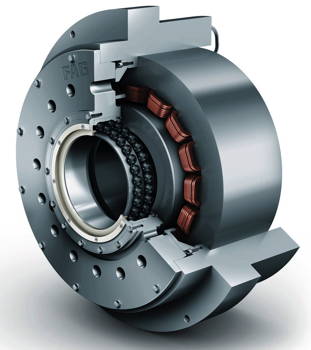- Home » News » Technology News
Magnetic bearings are on a roll
Schaeffler has developed an active magnetic bearing technology that uses rolling bearings to support large shafts if the power fails and the magnetic levitation effect is lost. In the past, most large-diameter magnetic bearings have relied on plain bearings to act as back-ups but, following a failure, these usually need to be replaced or repaired.
Active magnetic bearings operate by levitating a shaft using magnetic fields. The shaft can rotate at high speeds with almost no friction. Sensors measure any deviation of the shaft from its position, and electronic controls adjust the magnetic fields to ensure that it returns to the correct position. These bearings are usually used on large machines – such as motors, turbines and compressors – operating at high rotational speeds and can support shafts weighing up to several tonnes.
If power is lost, the shaft is designed to drop safely onto a back-up mechanical bearing. Traditionally, plain bearings have been used for this duty, but Schaeffler’s new magnetic bearing incorporates rolling bearings that can support shafts with diameters of 200mm or larger. There is less risk of damage if the power supply fails, the bearings are much less prone to wear, and emergency operation is possible with the shaft spinning at a reduced speed.

Schaeffler is currently collaborating with customers on various development projects based on the new magnetic bearing technology.





